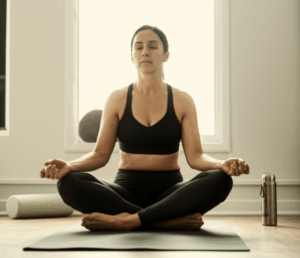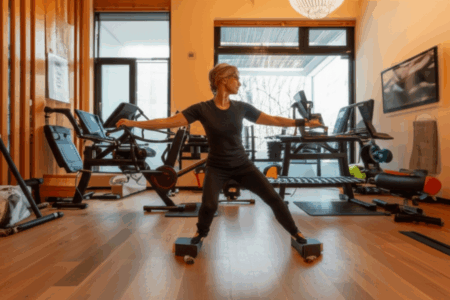For years, we’ve been told that daily exercise is the cornerstone of a healthy lifestyle. The image of hitting the gym every morning or squeezing in a run after work has been etched into our minds as the gold standard for fitness. But what if that wasn’t the only way? What if you could achieve similar, or even better, results by exercising less frequently? Emerging research suggests that you don’t necessarily have to sweat it out every single day to reap the rewards of physical activity. Let’s dive into what the science says about exercise frequency and how you can optimize your workout routine for a healthier, happier you.
The Myth of “Daily” Exercise
The conventional wisdom surrounding exercise often emphasizes consistency and frequency. While consistency is undoubtedly important, the idea that you must exercise every day to be healthy is increasingly being challenged. Several studies have begun to highlight the benefits of less frequent but equally effective workout routines.
The “Weekend Warrior” Effect
One particularly interesting area of research focuses on “weekend warriors”—individuals who cram their entire weekly exercise quota into one or two days. A study published in the Journal of the American Heart Association found that weekend warriors who achieved the recommended 150 minutes of moderate to vigorous physical activity per week had a significantly lower risk of early death from cardiovascular disease, cancer, and other causes, compared to less active people [3].
Specifically, the weekend warriors were 32% less likely to die from any cause, 31% less likely to die from cardiovascular disease, and 21% less likely to die from cancer over an eight-year follow-up period. What’s even more remarkable is that these results were similar to those who spread their exercise across three or more days a week [3].
Key Takeaways from the Research
- Total Volume Matters: The overall amount of exercise you get each week appears to be more important than how frequently you exercise.
- Flexibility for Busy Schedules: This is encouraging news for individuals who struggle to fit daily workouts into their busy schedules. Concentrating physical activity on weekends or a couple of days can still provide substantial health benefits.
How Much Exercise Do You Really Need?
So, if daily exercise isn’t mandatory, how much physical activity should you aim for each week? Global and federal guidelines generally recommend:
- Moderate-Intensity Aerobic Activity: At least 150 minutes per week. Examples include brisk walking, cycling at a casual pace, or gardening [2, 3, 6].
- Vigorous-Intensity Aerobic Activity: At least 75 minutes per week. Examples include running, swimming laps, or playing intense sports [3, 4].
- Combination: An equivalent combination of moderate and vigorous-intensity activity [3].
- Strength Training: Muscle-strengthening activities on two or more days per week. This could involve lifting weights, using resistance bands, or doing bodyweight exercises like push-ups and squats [1].
It’s essential to remember that these are general guidelines. Your individual needs may vary based on your age, health status, and fitness goals. Consulting with a healthcare professional or certified fitness trainer can help you determine the most appropriate exercise plan for you.
Benefits of Taking Rest Days
While hitting the gym hard might feel productive, rest days are equally crucial for your body’s recovery and overall progress.
Muscle Repair and Growth
Exercise, particularly strength training, causes microscopic tears in your muscle tissue. During rest, cells called fibroblasts repair this damage, allowing the tissue to heal and grow stronger [10]. Rest days are when the beneficial effects of exercise truly take place.
Preventing Muscle Fatigue
Exercise depletes your muscles’ glycogen levels, which are essential for energy. Rest allows your body to replenish these stores, preventing muscle fatigue and soreness. Ensuring adequate rest helps your muscles function optimally, even when you’re not working out [10].
Reducing the Risk of Injury
Overtraining can increase your risk of injury. When your body is overworked, you’re more likely to lose proper form, drop weights, or take a wrong step. Regular rest is essential for staying safe and preventing overuse injuries [10].
Supporting Healthy Sleep
While regular exercise can improve sleep, overdoing it can disrupt your sleep patterns. Constant exercise can overproduce energy-boosting hormones like cortisol and adrenaline, making it difficult to get quality sleep. Rest days help balance these hormones, promoting better sleep quality [10].
The Dangers of Overtraining
Pushing your body too hard without adequate rest can lead to a condition known as overtraining syndrome. This can manifest in several ways:
- Persistent Muscle Soreness: Lingering muscle pain that doesn’t improve with rest [10].
- Fatigue: Chronic tiredness and lack of energy [10].
- Decreased Performance: A noticeable decline in your athletic abilities [10].
- Mood Disturbances: Increased irritability, anxiety, or depression [10].
- Increased Risk of Injury: Greater susceptibility to injuries due to weakened muscles and impaired coordination [10].
- Hormonal Imbalances: Disruption of hormone levels, such as cortisol and testosterone [10].
- Suppressed Immune System: Increased vulnerability to illness [10].
To avoid overtraining, it’s essential to listen to your body, incorporate regular rest days, and gradually increase the intensity and duration of your workouts.
Fitting Exercise into Your Lifestyle: It Doesn’t Have to Be a Chore
One of the biggest barriers to regular exercise is the perception that it requires a significant time commitment. However, incorporating physical activity into your lifestyle can be easier than you think.
Short Bursts of Activity
New research indicates that even brief periods of vigorous activity can have significant health benefits. A study published in the British Journal of Sports Medicine found that short bursts of intense physical activity, such as climbing stairs or carrying groceries, can reduce the risk of cardiovascular events for non-exercisers [5].
Everyday Activities
Look for opportunities to add movement into your daily routine. Instead of driving to your mailbox, walk. Take the stairs instead of the elevator. Park further from the store. Play actively with your children at the playground instead of sitting on the sidelines [4, 5].
Five-Minute Eccentric Exercises
A recent study revealed that just five minutes of eccentric bodyweight exercises daily can enhance mental and physical health, improving strength and flexibility. Eccentric exercises involve lengthening a muscle under tension, such as slowly lowering a weight during a bicep curl. These exercises can be easily incorporated into your daily routine without requiring a gym [1].
The 22-Minute Sweet Spot
Another study suggests that around 22 minutes of daily exercise can protect against 19 serious conditions. Researchers found that individuals who engaged in moderate to vigorous exercise for at least 150 minutes per week had a significantly lower risk of chronic conditions like cardiovascular disease, cancer, respiratory disease, and diabetes [2].
Exercise and Blood Pressure
Exercise is universally linked with positive outcomes, like maintaining healthy blood pressure. Short bursts of physical activity can help get your heart pumping, but regular exercise is key for overall health. A new study published in the journal Circulation suggests that adding a few minutes of vigorous physical activity to your daily exercise routine can help lower blood pressure [4].
Key Findings
- An extra 5 minutes of stair climbing, cycling, and running was linked to slight reductions in systolic and diastolic blood pressure [4].
- Clinically meaningful improvements were seen at an additional 10 and 20 minutes of daily exercise [4].
- Everyday activities that get the heart pumping may promote healthy blood pressure [4].
The Mental Health Boost
The benefits of exercise extend far beyond physical health. Regular physical activity can also have a profound impact on your mental well-being.
Reducing Stress and Anxiety
Exercise is a natural stress reliever. Physical activity helps release endorphins, which have mood-boosting effects. Regular exercise can also help reduce symptoms of anxiety and depression [6].
Improving Cognitive Function
Exercise has been shown to improve cognitive function, including memory, attention, and processing speed. Physical activity increases blood flow to the brain, which can enhance cognitive performance [6].
Boosting Self-Esteem
Achieving fitness goals can boost your self-esteem and confidence. As you become stronger and more physically fit, you’re likely to feel better about yourself [6].
Tailoring Your Exercise Plan
The key to a successful exercise routine is finding activities that you enjoy and that fit into your lifestyle.
Find What You Love
Experiment with different types of exercise until you find activities that you genuinely enjoy. Whether it’s dancing, hiking, swimming, or playing a sport, finding something you love will make it easier to stick with your routine.
Set Realistic Goals
Start with small, achievable goals and gradually increase the intensity and duration of your workouts. Setting realistic goals will help you stay motivated and avoid burnout.
Listen to Your Body
Pay attention to your body’s signals and adjust your routine as needed. If you’re feeling tired or sore, take a rest day. Don’t push yourself too hard, especially when you’re just starting out.
Final Thoughts: Quality Over Quantity
The latest research is shifting the focus from daily exercise to a more balanced approach that emphasizes total weekly activity and adequate rest. You don’t need to feel pressured to exercise every day to be healthy. Instead, prioritize getting the recommended amount of physical activity each week, whether you spread it out over several days or condense it into a “weekend warrior” routine.
Remember, exercise should be a sustainable part of your lifestyle, not a chore. By finding activities you enjoy, setting realistic goals, and listening to your body, you can create an exercise plan that works for you and helps you achieve your health and fitness goals. So, ditch the daily grind, embrace flexibility, and exercise smarter, not harder!







